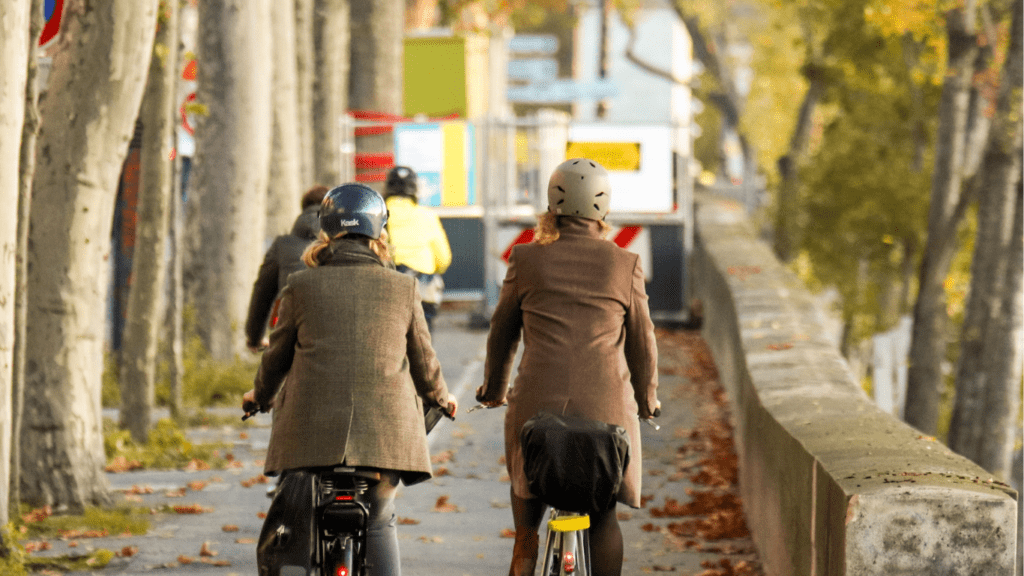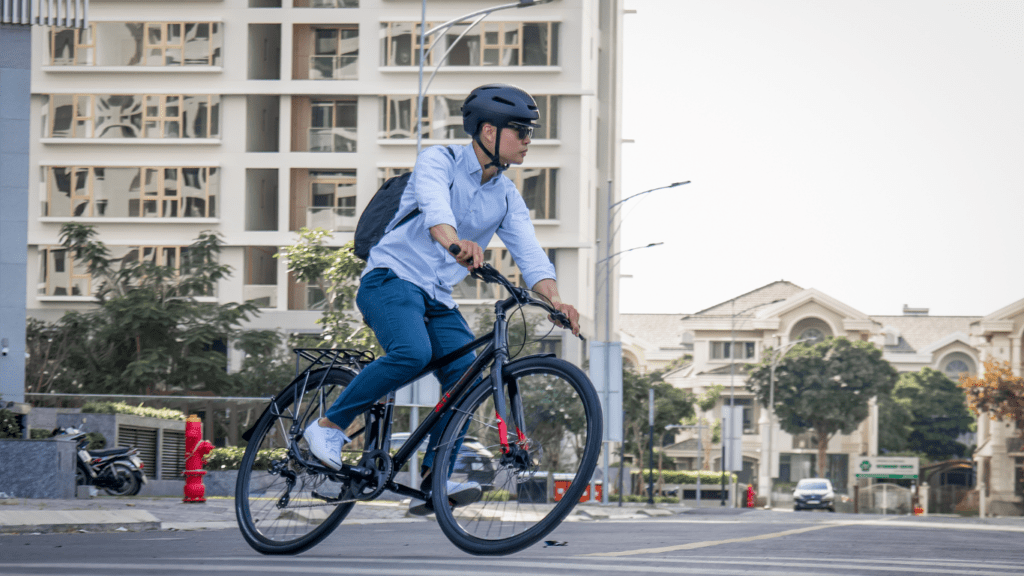Understanding the Risks of Urban Cycling
Urban cycling involves unique risks that all riders should recognize. Knowledge of these risks helps ensure safer journeys through city streets.
Common Hazards for Cyclists in the City
Cyclists in cities face multiple hazards. Distracted drivers, who may be on their phones or adjusting their radios, pose a significant risk.
Parked cars and their passengers often open doors without looking, creating “dooring” hazards. Pedestrians, who unpredictably step off curbs or jaywalk, add another layer of danger.
Road conditions, including:
- potholes
- uneven surfaces
- debris
further complicate safe navigation. Heavy traffic increases the likelihood of collisions and conflicts with motor vehicles.
Statistics on Cycling Accidents in Urban Areas
Cycling accidents in urban areas are concerning. According to the National Highway Traffic Safety Administration (NHTSA), over 70% of cycling fatalities in the US occur in urban settings.
The Centers for Disease Control and Prevention (CDC) reports that cyclists face a higher injury rate in cities, with non-fatal injury rates reaching 24.4 per 100,000.
Analysis reveals intersections as key locations for accidents, accounting for 60% of collisions involving cyclists.
Essential Gear for Urban Cyclists
Safety gear becomes even more critical when navigating city streets. Essential items can make a significant difference in mitigating risks and enhancing visibility.
Helmets and Protective Clothing

Everyone should wear helmets. According to the National Highway Traffic Safety Administration, helmets reduce the risk of head injury by 60%.
When selecting one, choose a helmet certified by the Consumer Product Safety Commission (CPSC).
Protective clothing minimizes injuries. Opt for padded shorts, gloves, and reinforced jackets.
Materials like Kevlar and Cordura protect skin during falls. Incorporate weather-resistant layers to keep dry during sudden rain.
Lights and Reflective Accessories
Urban streets need enhanced visibility. Equip bikes with front and rear lights; white lights for the front and red lights for the back. Local laws typically require them after dusk.
Reflective accessories catch drivers’ attention. Attach reflective tape to your bike frame, tires, and clothing. Use reflective vests or bands on wrists and ankles, as moving parts make you more noticeable.
These gear essentials significantly reduce urban cycling risks. Proper equipment keeps cyclists visible and protected, making city rides safer.
Best Practices for Safe Cycling in the City
Cycling in urban environments offers both excitement and challenges. Safety remains a top priority for city cyclists, underscored by a focus on best practices.
Obeying Traffic Laws and Signals
Following traffic laws ensures a smoother and safer journey. Urban cyclists must treat traffic lights like any other vehicle, stopping at red lights and proceeding on green.
Riding predictably helps drivers and pedestrians anticipate cyclists’ movements. Signal turns using hand signals to show intentions clearly.
Being Visible and Predictable
Visibility on busy streets prevents accidents. Wear bright, reflective clothing during both day and night. Equip bikes with front and rear lights, especially in low-light conditions.
Cyclists should ride in a straight line, avoiding sudden swerves which can confuse motorists. Establish eye contact with drivers at intersections to confirm you’ve been seen.
Strategic Route Planning
Choosing the right route enhances safety. Maps and apps can help identify bike-friendly paths, dedicated lanes, and lower-traffic roads. Prefer routes with fewer intersections and hazards, reducing the chance of accidents.
Utilize bike lanes and avoid narrow, high-speed roads. Plan routes ahead of time to stay relaxed and focused during the ride.
Handling Interactions with Vehicles
Urban cyclists often share the road with numerous vehicles, making it essential to navigate safely and confidently to avoid accidents. Below are detailed tips for managing these interactions.
Right of Way and Making Safe Turns
- Yield to pedestrians and follow traffic signals.
- Always signal your intentions before turning or changing lanes.
- Position yourself in the lane where you’re most visible, avoiding blind spots.
- When making left turns, use the turning lane or turn from the far-left side of the traffic lane.
- For right turns, stay close to the curb without cutting off other vehicles or pedestrians.
Dealing With Aggressive Drivers
Stay calm and maintain a safe distance from aggressive drivers. Avoid making eye contact if conflict arises. If a driver honks or yells, don’t respond and focus on your safety.
Note the vehicle’s description and license plate number if aggressive behavior persists. Report dangerous incidents to law enforcement when safe.
Use designated bike lanes whenever possible to minimize interactions with aggressive drivers.

 Hello, I'm Henry Kirkland, and I’m proud to be part of the Cycle Smooth Ride Long team. Cycling is more than just a sport for me—it’s a way of life. I’m here to share my passion and expertise with you, helping you navigate the world of cycling with confidence and joy.
Whether you’re a beginner looking to get started or a seasoned rider aiming to refine your skills, my goal is to provide you with the insights, tips, and guidance you need to make the most of your cycling journey. At Cycle Smooth Ride Long, we’re dedicated to creating a community where cyclists of all levels can connect, learn, and grow together.
Hello, I'm Henry Kirkland, and I’m proud to be part of the Cycle Smooth Ride Long team. Cycling is more than just a sport for me—it’s a way of life. I’m here to share my passion and expertise with you, helping you navigate the world of cycling with confidence and joy.
Whether you’re a beginner looking to get started or a seasoned rider aiming to refine your skills, my goal is to provide you with the insights, tips, and guidance you need to make the most of your cycling journey. At Cycle Smooth Ride Long, we’re dedicated to creating a community where cyclists of all levels can connect, learn, and grow together.
